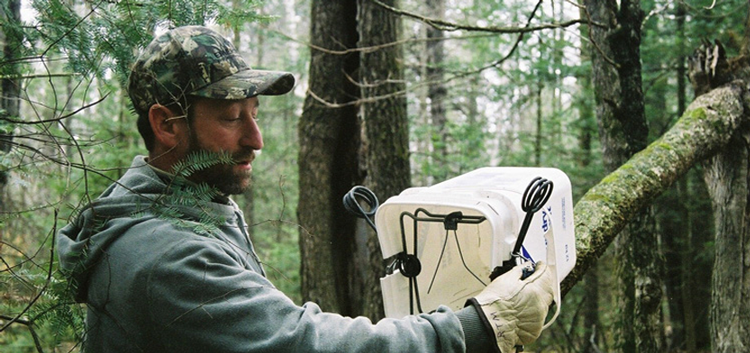
Reasons we trap
Trapping is practiced almost everywhere in the world for a variety of reasons. Trapping provides food and income; protects property, habitat and human health; and supports responsible wildlife management. In North America, trapping is strictly regulated by provincial, territorial and state wildlife agencies. Government wildlife biologists and conservation officers ensure that trapping is conducted in a sustainable and humane fashion.
Download our fact sheets Trapping in North America and Canada’s Fur Trade at a Glance (PDF).
Download our fact sheets Trapping in North America and Canada’s Fur Trade at a Glance (PDF).
TRAPPING TO MAINTAIN STABLE AND HEALTHY WILDLIFE POPULATIONS
Most species can produce more young than their habitat can support to adulthood.
This may produce extreme “boom and bust” cycles as populations increase beyond the “carrying capacity” of their environment and then “crash” as starvation and disease decimate the malnourished and overcrowded animals. Regulated trapping can help to maintain a balance with available habitat, promoting more stable and healthy wildlife populations.
Trapping can also help to protect threatened or endangered species.
For example, endangered sea turtle eggs, black footed ferrets, whooping cranes and other rare species may need protection from excessive predation by foxes, raccoons and coyotes. Overpopulated nutria and muskrats can destroy coastal marshes (e.g., in Louisiana) which support many other species. Overpopulated beavers flood forests and other wildlife habitat.
TRAPPING TO PROTECT PROPERTY, LIFESTOCK & HUMAN HEALTH
Regulated trapping can help to prevent over-population that promotes the spread of rabies, sarcoptic mange, tularemia and other diseases that threaten not only wildlife but also livestock, pets and humans.
Overpopulated beavers can flood homes, crops, roads and other property. Muskrats can block culverts, weaken dikes and damage fields and roadways with their tunneling.
Overpopulated coyotes are the number one predation problem for ranchers in many parts of North America, preying on calves and lambs.
TRAPPING FOR RESEARCH & RELOCATION
Modern foothold or other restraining traps allow biologists to capture, radio-collar and release wildlife, unharmed, in order to monitor the animals and learn more about their behavior and needs.
Traps are also used to capture and relocate wolves, Canadian lynx and other animals into areas where they once lived but have been extirpated. For example, the restoration of wolves in Montana and river otters in Missouri was done with modern restraining traps.
Trappers provide information and samples that allow biologists to study wildlife diseases and population dynamics. For example: statistics on the age and sex distribution of animals captured allows biologists to determine whether certain populations are increasing or decreasing.
Because trappers work in the same regions for many years — or even for several generations — they are often the first to sound the alarm when pollution or habitat destruction threaten wildlife. We all care about nature, but trappers are the ones who are out in the wild to observe what’s really occurring.
TRAPPING FOR FOOD, INCOME AND TO MAINTAIN LAND-BASED CULTURES
Trapping provides food, clothing and much-needed income for families in rural or remote communities where other forms of employment may be hard to find.
Trapping also plays a role in maintaining traditional knowledge, personal autonomy and social cohesion in many Canadian aboriginal communities.






